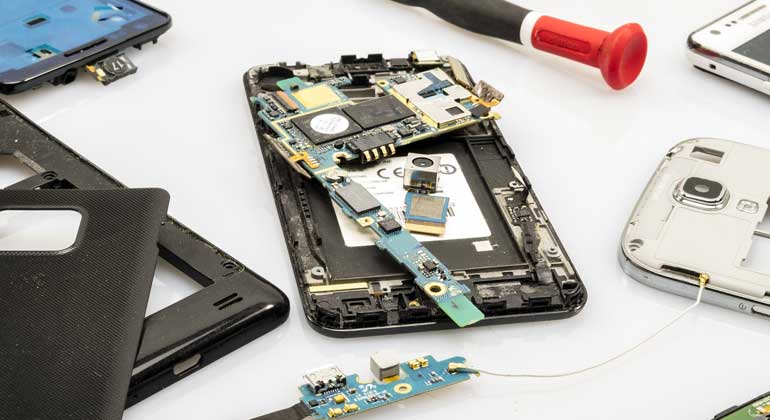New UN report provides comprehensive overview of global e-waste challenge
The report seeks to increase global awareness and draw attention to the growing world issue of e-waste, which includes discarded products with a battery or plug including mobile phones, laptops, televisions, refrigerators and electrical toys.
A new assessment on global electronic waste (e-waste), policies and statistics, The Global E-Waste Monitor 2017, has been released by the United Nations University (UNU) and the International Solid Waste Association (ISWA) together with the International Telecommunication Union (ITU).
The assessment shows that 44.7 million metric tonnes of e-waste were generated in 2016, up 3.3 metric tonnes (8 per cent) from 2014. In 2016, only about 20 per cent – or 8.9 million metric tonnes – of all e-waste was recycled. Experts foresee a further 17 per cent increase to 52.2 million metric tonnes of e-waste by 2021. The assessment also highlights the significant and growing risk to the environment and human health due to increasing levels of e-waste and its improper and unsafe treatment and disposal through burning or in dumpsites.
The assessment also notes positive news: There is now a growing number of countries adopting e-waste legislation. Currently 66 per cent of the world population, living in 67 countries, is covered by national e-waste management laws, a significant increase from 44 per cent in 2014. National e-waste policies and legislation play an important role as they set standards, guidelines and obligations to govern the actions of stakeholders who are associated with e-waste.
The assessment also reports that low recycling rates can have a negative economic impact, as e-waste contains rich deposits of gold, silver, copper, platinum, palladium and other high value recoverable materials. It estimates that the value of recoverable materials contained in e-waste generated during 2016 was US-$ 55 billion, which is more than the Gross Domestic Product of most countries in the world.
“The world’s e-waste problem continues to grow. Improved measurement of e-waste is essential to set and monitor targets, and identify policies,” commented Jakob Rhyner, Vice-Rector of the United Nations University. “National data should be internationally comparable, frequently updated, published and interpreted. Existing global and regional estimates based on production and trade statistics do not adequately cover the health and environmental risks of unsafe treatment and disposal through incineration or landfilling.”
“We live in a time of transition to a more digital world, where automation, sensors and artificial intelligence are transforming industry and society,” underlined Antonis Mavropoulos, President of the International Solid Waste association (ISWA). “E-waste is the most emblematic by-product of this transition and finding the proper solutions for e-waste management is a measure of our ability to utilize the technological advances to stimulate a sustainable future and to make the circular economy a reality. We need to be able to measure and collect data and statistics on e-waste, locally and globally, in a uniform way. This report represents a significant effort in the right direction and ISWA will continue to support it as a very important first step towards the global response required.”
Earlier this year IUNU, ISWA and ITU joined forces and launched the “Global Partnership for E-waste Statistics”. Its objective is to help countries produce e-waste statistics and to build a global e-waste database to track developments over time. This partnership further aims to map recycling opportunities from e-waste, pollutants and e-waste related health effects, along with building national and regional capacities to help countries produce reliable and comparable e-waste statistics that can identify best practices of global e-waste management. Ultimately, its work will contribute to the achievement of Sustainable Development Goals (SDG) 11.6 and 12.5 by monitoring relevant waste streams and tracking the ITU Connect 2020 target 3.2 on e-waste.
The report in full, including national e-waste data








